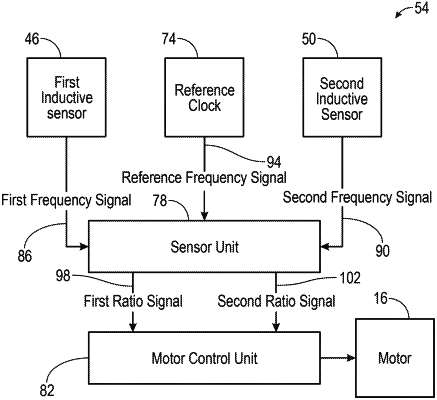| CPC H03K 17/9618 (2013.01) [G01D 5/202 (2013.01); H01F 5/003 (2013.01); H02K 11/28 (2016.01); H03K 17/97 (2013.01); H03K 2017/9706 (2013.01)] | 19 Claims |

|
1. A power tool comprising:
an electric motor;
a controller in electrical communication with the motor to activate and deactivate the motor;
a trigger;
a conductor coupled for movement with the trigger;
a printed circuit board having an inductive sensor thereon responsive to relative movement between the conductor and the inductive sensor caused by movement of the trigger, wherein an output of the inductive sensor is detected by the controller, which in response activates or deactivates the electric motor;
a sensor unit in communication with the controller; and
a reference clock configured to provide a reference frequency signal to the sensor unit that is indicative of a reference frequency of the reference clock,
wherein the output of the inductive sensor is a sensor frequency signal indicative of a sensor frequency of the inductive sensor, wherein the sensor frequency of the inductive sensor is configured to change based on relative movement between the conductor and the inductive sensor,
wherein the sensor unit is configured to receive the sensor frequency signal from the inductive sensor and output a ratio signal to the controller, which is a ratio of the sensor frequency to the reference frequency, and wherein the controller activates or deactivates the motor based upon the ratio signal.
|